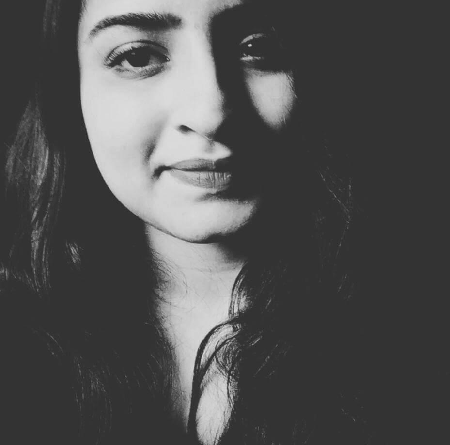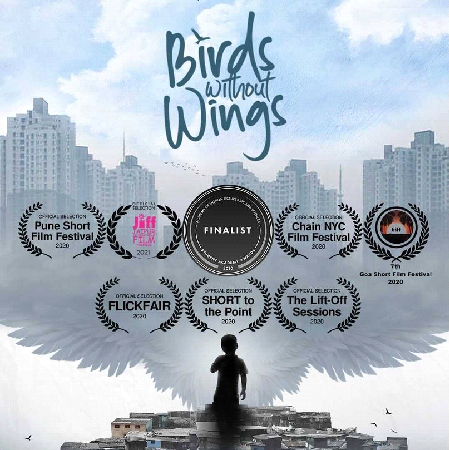Behind the Cut – Building a story through editing By Apoorva Sankar
Film editing is definitely an underrated art and not given much credit for but when most of you will think of it as special effects, sounds, animation and so on. But here is the secret to good editing. It is not the dazzle of technology or the crispness of the cuts.
I learned the power of storytelling when I was three years old from my Dad. He had a knack of telling me stories in such a way that had the opposite effect than what he intended. Instead of putting me to sleep, his stories made me crave for more! The stories created a new world for me. A world of colours, magic, fantasies and a world everyone lived happily ever after. It was a parallel universe with my imaginary friends and situations that made me believe that I could talk to them and see them coming to life. It might sound crazy today, but that’s where my visualization of stories began and sowed the seeds for my career as an editor.
Living in the city of Mumbai, the home of “Bollywood” contributed too. I remember going with my Dad to see the homes of superstars and waiting to have a glimpse of them when they came to wave to their fans. I knew the tinsel town was a make believe world, but nevertheless a beautiful story.
I continued to live in this dream even when I pursued my degree in English literature from Mumbai University and I studied some exciting topics like The Victorian Age, Modern Literature and Gender studies. My visual story skills flashed back at me and I began writing my own short stories and asked a few friends to shoot them for me. I was no expert, but the process of collaboration made me realize that creativity has no bounds. I joined a diploma course in filmmaking and attended classes late in the evenings after my college. Here I learned various aspects of film making including editing and I fell in love with it. I realised the value of what Stanley Kubrick wrote “I love editing. I like it more than any other place of film making. If I wanted to be frivolous, I might say that everything that precedes editing is merely a way to produce a film to edit”
I was awed by the simplicity and technical balance that an editor contributes to a film. The beauty of carving a movie in post-production made me realize that this was my way of weaving a story to an audience. I started volunteering with NGO’s and helped them with short films. I worked on my friend’s projects and refined the short films that they made. I loved the process of finding themes, music, effects, and a rhythm for my work. I was still a new-bee in this world, and I began watching independent films to broaden my knowledge about movies. I started applying to various film schools hoping that this dream of mine can come true and I got selected for the Film Production program with Editing Emphasis at Dodge College of Media Arts. My vision opened to an entirely new level. I began my creative journey as an editor and collaborated on several projects with my peers. I understood the dynamics of different creative minds coming together to make a film. I got to edit contemporary work and documentaries.
The art of Filmmaking has changed over the past few years, and technology has had the biggest impact on this medium. From visual effects to graphic design to animations…the list of technology based innovations in film making is endless. However, I believe that technology is just an enabler to tell the story in non-traditional ways. It is still the way you tell the story that makes the audience enchanted.
Let me tell you a story to substantiate that. Last year I was part of the post-production team of the film “Birds without Wings,” a documentary that tells the story of an NGO’s journey to educate children in the slums of North India. The editing process for this film was a different experience as I realized that the art of storytelling is more important than the techniques I use in the editing room. I analysed 40 hours of footage to develop a 20 minute story from it. I struggled to figure out what would work for the story and how I would fix the puzzle together. Then I realised that I was focussing on the quality of the technology and cuts that I’m making and missing the story. I spoke to many people in that organization about the central message of the film and what the story they want to be told. Then I could edit it such a way that the message comes through loud and clear. I realised that keeping the message simple is the surest way to edit an impactful film. There is no substitute to a good story.
This approach helped me to construct the “Birds without Wings” in a way that it became the finalist for the Student Academy Awards in 2020 and also won recognition in many festivals. It played in Goa Short Film Festival 2020, Pune Film Short festival 2020, Jaipur International Film Festival 2021, the 10th Mumbai Shorts International Festival 2021, and the 12th Dada Saheb Phalke Film Festival in 2021.
I also won best editing awards at New York International Film Awards 2021 and Global Film Festival in Los Angeles 2021.
I saw this power of building the story through editing when I edited my post-graduation thesis film at Chapman University, “A Dire Strait” is a story about a daughter and her mother-in-law which was definitely a much relatable subject as an Indian. A Dire strait is a genre blend of suspense and horror and irks the audience to believe in extremism. When I sat with the Director to cut the film, we used the editing tools to present the story and generate those emotions in our audience that we experienced when we heard that story for the first time. A story narrated in different ways generate different emotions in the audience. Hence it is important to cut it in a way that story impacts the way we want it to be.
A Dire Strait is currently on its festival run and it won the Eastern Europe Film Festival for Best Editing 2022.
Recently I also finished another film called, “I was always coming back” for Columbia University and currently working at a film-trailer house where I assist editors with the latest-upcoming trailers of new movies. Here I realized the diversity of storytelling when diverse people come together as a team to build a film. The story is not just the script or how the actors present but it how the team of the film choose to tell it.
Cinema has made awesome progress over these years and I’m sure there will be many more advances in technology, especially in my field of editing. But, like my father’s knack of storytelling, a story well told will always be the film that the audience will love. So while I will never stop in finding innovative ways editing a film, I always keep the central message of the story in my mind.
I cut the end here. If you like my story, please feel free to connect with me.
My website: www.apoorvasankar.com





